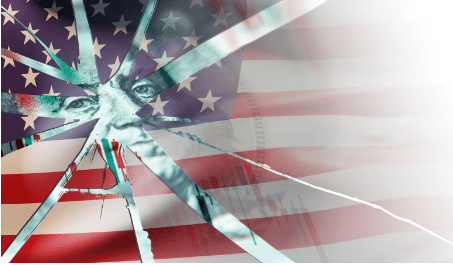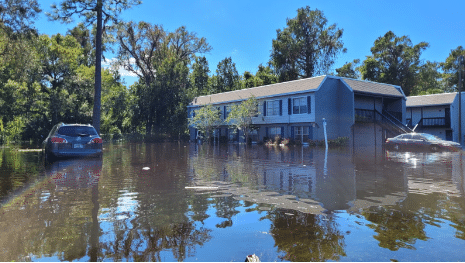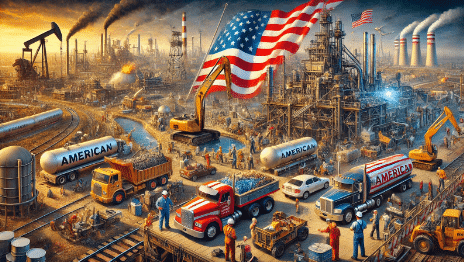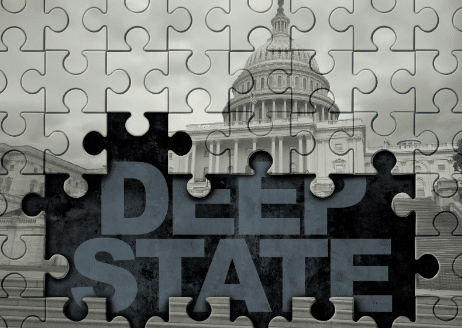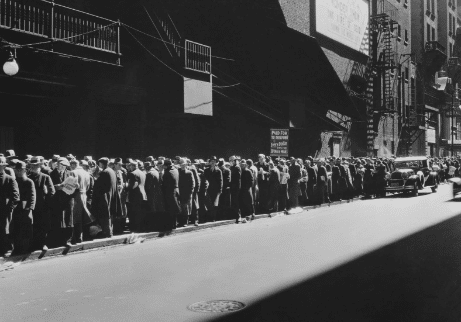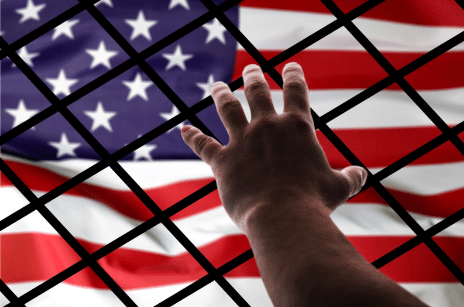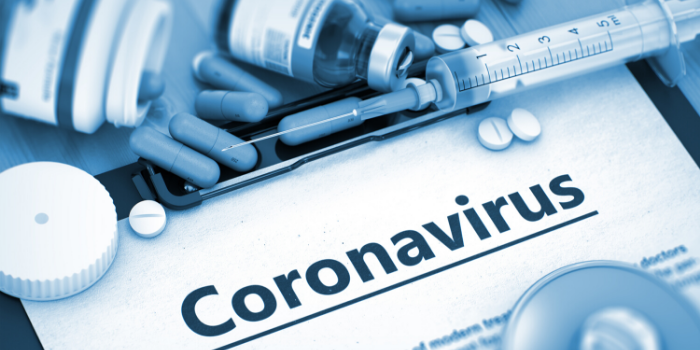
American Consumers Have No idea That 97% of Their Antibiotics Come From China
With the severity of the Chinese Coronavirus hitting untold numbers of people in Mainland China, it is important to realize how attached we are.
This report reveals that 97% of our drugs, including anti-depressants, antibiotics, and over-the-counter medication, are sourced from China where the contents are not FDA inspected.
More importantly, with a population twice the size of the United States on lock-down, where will we source these life-giving, mind-altering or pain-relieving substances?
"by Yanzhong Huang
Last month, the U.S.-China Economic and Security Review Commission held a hearing on the United States’ growing reliance on China's pharmaceutical products. The topic reminded me of a spirited discussion described in Bob Woodward’s book, Fear: Trump in the White House. In the discussion, Gary Cohn, then chief economic advisor to President Trump, argued against a trade war with China by invoking a Department of Commerce study that found that 97 percent of all antibiotics in the United States came from China. “If you’re the Chinese and you want to really just destroy us, just stop sending us antibiotics,” he said.
Cohn’s words highlight a security concern associated with pharmaceuticals from China. As Rosemary Gibson noted in her testimony, centralization of the global supply chain of medicines in a single country makes it vulnerable to interruption, “whether by mistake or design.” If we are dependent on China for thousands of ingredients and raw materials to make our medicine, China could use this dependence as a weapon against us. While the Department of Defense only purchases a small quantity of finished pharmaceuticals from China, about 80 percent of the active pharmaceutical ingredients (APIs) used to make drugs in the United States are said to come from China and other countries like India. For example, the chemical starting material used to make doxycycline, the recommended treatment for anthrax exposure, comes from China. When an influential Chinese economist earlier this year suggested that Beijing curb its exports of raw materials for vitamins and antibiotics as a countermeasure in the trade war with the United States, the worries surrounding our API dependence to China seemed to be vindicated. Concern about a disruption in the supply chain could explain why the tariffs on Chinese products proposed by the United States Trade Representative in May 2019, worth approximately $300 billion, excludes “pharmaceuticals, certain pharmaceutical inputs, and select medical goods.”
While the potential exposure to raw material supply disruptions drives part of our fear, concern about the safety and efficacy of Chinese-made pharmaceuticals is another component. In the summer of 2018, one of China’s largest domestic vaccine makers sold at least 250,000 substandard doses of vaccine for diphtheria, tetanus, and whooping cough. It was the latest in a slew of scandals caused by poor quality drug products made in China over the last decade. In 2008, the contamination of a raw ingredient imported from China and used to make heparin, a blood-thinning drug, was associated with at least eighty-one deaths the United States. According to an investigative journalist, fraud and manipulation of quality data is still endemic in Chinese pharmaceutical firms.
In order to address the growing security and safety concerns about Chinese-made pharmaceuticals, some suggest that the United States switch to India as an alternative API supplier. However, doing so would be no different from rearranging the deck chairs on the Titanic. It is true that many Indian pharmaceutical firms are leading API manufacturers but India depends on China for sourcing nearly three quarters of APIs in generic drug formulations. The disruption in the supply chain notwithstanding, switching to India for the supply of APIs would only make the drugs sold in the United States more expensive: APIs and chemical intermediates from China are 35 to 40 percent cheaper than Indian ones. Moreover, India has its own drug safety problems as well. In 2013, a generic drug maker in India pled guilty to drug safety charges, which included shipping batches of adulterated drugs, having incomplete testing records, and inadequate programs to assess drug quality. According to a former executive of the company, this was only a fraction of the safety issues the Food and Drug Administration (FDA) could identify in overseas plants.
Moreover, we could have overestimated our dependence on Chinese-made pharmaceutical products. As of 2018, China claimed 13.4 percent of all import lines– defined as distinct regulated products within a shipment through customs–among countries that export drugs and biologics to the United States. Of these import lines for drugs and biologics, about 83 percent were finished drugs, and only 7.5 percent were APIs. We certainly underestimate the share of APIs from China given that Chinese-made APIs can come to the United States as part of the finished drug products from other countries like India. However, the lack of a reliable API registry makes it difficult to estimate the true market share of Chinese-made APIs.
In addition, when highlighting our dependence on Chinese-made pharmaceuticals, we could overlook the other side of the coin: China needs finished drugs made in the United States. China is facing a crisis of non-communicable diseases, including cancer, cardiovascular diseases, and diabetes. It is estimated that between 2002 and 2016, new cancer cases in China increased by more than 55 percent, from 2.19 million to 3.8 million. A majority of Chinese cancer patients, however, lack access to the most effective drugs. Partly because of this, cancer survival rate in China is less than half of the United States. Under the performance-based legitimacy in contemporary China, the government must justify its rule by continuously delivering public goods and services, like better healthcare, to meet people’s wants. In an increasingly state-dominated political system, the link between performance and legitimacy becomes so tight that failure to deliver such goods could endanger the system itself. In the meantime, with the rapid improvement of material living standards, Chinese people are increasingly valuing things beyond basic earnings, such as good health. As President Xi Jinping stated in the 19th Party Congress, the “principal contradiction” in the society is “the contradiction between unbalanced and inadequate development and the people’s ever-growing needs for a better life.” In fact, in 2018, the government cut the import value-added tax on cancer drugs from 17 percent to 3 percent and reduced import tariffs on all common drugs and cancer drugs to zero. Essentially, regime legitimacy requires the state to deliver the most effective drugs, which are often patented and provided exclusively by multinational pharmaceutical companies. In May 2019, China unveiled a list of imported U.S. medical products to impose punitive tariffs upon. The list includes commonly used drugs such as insulin, ibuprofen, as well as medical devices such as ultrasonic diagnostic apparatuses and endoscopes, which Chinese firms can manufacture themselves. Nevertheless, the list did not include anti-cancer drugs and other patented ones.
The same legitimacy concern also led the Chinese government to introduce incentives to improve the quality of its pharmaceutical products. In 2016, China’s FDA introduced the Generic Consistency Evaluation (GCE), which required generic drugs approved for production prior to 2008 to pass the GCE in order to gain “equivalence” to branded drugs in terms of safety and efficacy. Failure to pass the GCE in a timely manner will lead to the revocation of registration licenses or ineligibility for government tendering. Since generic drugs approved before 2008 are prone to low quality problems, a significant number of drugs that have failed to pass GCE are expected to exit the public market. The measure will help weed out over half of the nation’s 2,900 or so small, and often low-quality, domestic drug makers. Since early this year, nearly 20 pharmaceutical firms have either exited the industry or been reorganized.
So what does all this mean for a response from the United States? Before making any major decisions on this issue, it is important to collect as much information as possible for a full assessment of the risks we face. We should also nurture the development of alternative sources and capabilities to make critically essential drugs in the United States. At present, instead of looking at the issue from a national security perspective, the best approach is to work with China to ensure the safety and efficacy of their pharmaceutical products. As I argued in my testimony to the U.S.-China Commission, this involves expanding the FDA’s inspection activities in China, helping to beef up the regulatory capacities of China’s National Medical Products Administration in the drug development and review process, and making sure Chinese firms consistently follow the appropriate process for safeguarding quality in production. Lastly, the U.S.-China Social and Cultural Dialogue, the only high-level forum to discuss U.S.-China cooperation after 2017, should be reopened as an institutional venue to discuss these issues."
"
The financial market is crumbling and EVERYONE will be affected. Only those who know what's going on and PREPARE will survive... dare we say thrive. Our 7 Simple Action Items to Protect Your Bank Account will give you the tools you need to make informed decisions to protect yourself and the ones you love.



